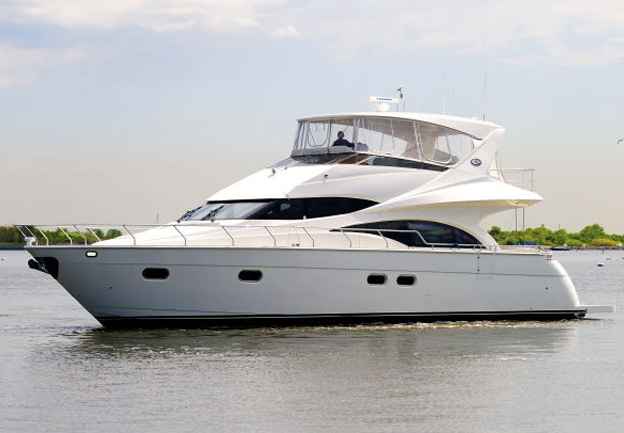- Alaskan Yachts
- Azimut Yachts
- Back Cove Yachts
- Beneteau Yachts
- Benetti Superyachts
- Bertram Yachts
- Boston Whaler
- Broward Yachts
- Buddy Davis Sportfish
- Burger Yachts
- Cabo Yachts
- Catamarans
- Carver Motoryachts
- Center Console
- Chris-Craft Yachts
- Cruisers Yachts
- DeFever Trawlers
- Dufour Sailboats
- Fairline Yachts
- Feadship Yachts
- Ferretti Yachts
- Formula Yachts
- Fountaine Pajot Cats
- Grady-White
- Grand Banks Trawlers
- Hargrave Yachts
- Hatteras Yachts
- Hinckley Picnic Boats
- Horizon Yachts
- Hydra-Sports
- Intrepid Boats
- Jarrett Bay Sportfish
- Jeanneau Yachts
- Kadey-Krogen Trawlers
- Lazzara Yachts
- Luhrs Sportfish
- Marlow Yachts
- Maritimo Yachts
- Marquis Yachts
- McKinna Motoryachts
- Meridian Yachts
- Midnight Express
- MJM Yachts
- Mochi Craft
- Neptunus Motoryachts
- Nordhavn Trawlers
- Nordic Tugs
- Ocean Alexander Yachts
- Offshore Yachts
- Outer Reef
- Oyster Sailing Yachts
- Pacific Mariner Yachts
- Palmer Johnson Yachts
- Pershing Yachts
59 Carver Marquis 2003
![]()

Source: Richard Thiel, Power & Motoryacht Magazine
I was standing at Carver’s display at the Miami International Boat Show as a couple of Italians disembarked from the new 59 Marquis. Curious what they might have to say after touring what the builder was claiming to be a true American-European hybrid, I edged closer.
“It really looks Italian,” marveled one.
“It doesn’t look Italian,” corrected his paisano, “it is Italian.”
Well, not exactly. The Venice-based marine design firm of Nuvolari and Lenard certainly gave the 59 a continental look, but it was the men and women of Pulaski, Wisconsin, who built her. Still, after my turn aboard the 59 that night and a full-day sea trial on her in Fort Lauderdale a few weeks later, I felt this boat had more in common with an Azimut or Ferretti than with another Carver. That’s not to say she’s their peer. Her sapele and cherry joinery and lovely, three-panel, solid-cherry doors are a huge step up from other Carvers, but the company still has a way to go before it can match the flawless, deep lacquer that routinely comes out of Italy and England.
Yet the 59 is at her heart a different Carver. She’s even built differently, inspired by EU Class I standards, the most stringent classification. Her hull has a solid-glass bottom and a combination of foam and balsa cores in the hull sides. She uses what Carver calls U.S. Navy-style construction, featuring a deck that, when attached to the hull, creates a monolith that needs no structural support other than bulkheads. The separate superstructure is an aluminum grid onto which is attached the laminate. A metal flange on it mates to a steel-reinforced deck boss, where the two are married with urethane sealant and bolts. The deck itself is a combination of tubular aluminum, balsa core, and foam encapsulated in fiberglass. Windows are direct-bonded—no frames—and engine beds are engine-length U-shape steel rails bolted from the top down into tapped steel plate embedded in the stringers and also through-bolted horizontally. The shelf on which the steering quadrants attach is reinforced with carbon fiber, and bulkheads are triple-bonded to the hull and sealed at all penetrations.
Impressive? Undoubtedly, but it’s what people see when they walk through the 59 that will make them wonder if they’re on a Carver. Everything from the Mariner Italian Faucetry plumbing fixtures to the brushed-aluminum Olivari door hardware is upscale. Yet this is still a Carver, and that means superb space utilization. When you walk down from the main level to the accommodations level, you do so via a comfortable 2’5”-wide curved stairway that leads to a large foyer with a granite sole that has LEDs embedded in it.
Head forward and you come to the VIP, with port and starboard full-length hanging closets, 6’6” headroom, port and starboard ports, and an optional flat-panel TV that flips down from the overhead. There are plenty of high-power halogen lights—they need a dimmer—and a large en suite head with enclosed shower to starboard.
The midship master is abaft the foyer and offers two larger hanging closets, each with elegantly curved doors, plus two ports and large built-in cabinets on each side. The en suite head, like its forward mate, has a large enclosed shower.
Boat Specification: 59 Carver Marquis 2003
Boat Type: Cruiser
Standard Power: 2/660-hp Cummins QSM11 diesel inboards
Optional Power: 2/715-hp Volvo Penta D12 or 2/825-hp MTU Series 60 diesel inboards
Length Overall (LOA): 59’6” w/platform
Beam: 16’6”
Draft: 5’5”
Weight: 58,500 lbs.
Fuel Capacity: 800 gal.
Water Capacity: 200 gal.
Standard Equipment: hydraulic swim platform; fore and aft shorepower ties; bow and stern thrusters; granite countertops and soles; Sub-Zero refrigerator and freezer; 32” Sony plasma TV; 110-volt stereo and Surround Sound system in saloon; 2/isolation transformers; 4/2,000-gph bilge pumps; bronze through-hulls; KitchenAid convection/microwave oven; 15.5-kW Kohler genset
Test Engines: 2/825-hp MTU Series 60 diesel inboards
Transmissions / Ratio: ZF/1.92:1
Props: 32×351?2 4-blade Nibral
Steering: Teleflex Sea Star hydraulic
Controls: MTU electronic
Optional Equipment On Test Boat: lower helm; 23-kW Kohler genset; davit; dual warping winches; dishwasher; pilothouse door; master stateroom stereo, TV, and DVD player; CCTV system; Raymarine electronics package; Raymarine autopilot
Conditions: temperature: 75º; humidity: 65%; wind: 5-10 mph; seas: flat; load: 700 gal. fuel, 150 gal. water, 4 persons, 600 lbs. gear. Speeds are two-way averages measured w/Stalker radar gun. GPH measured with MTU digital display. Range: 90% of advertised fuel capacity. Decibels measured on A scale. 65 dB is the level of normal conversation. All measurements taken with trim tabs fully retracted
Waterline length: 45’6”